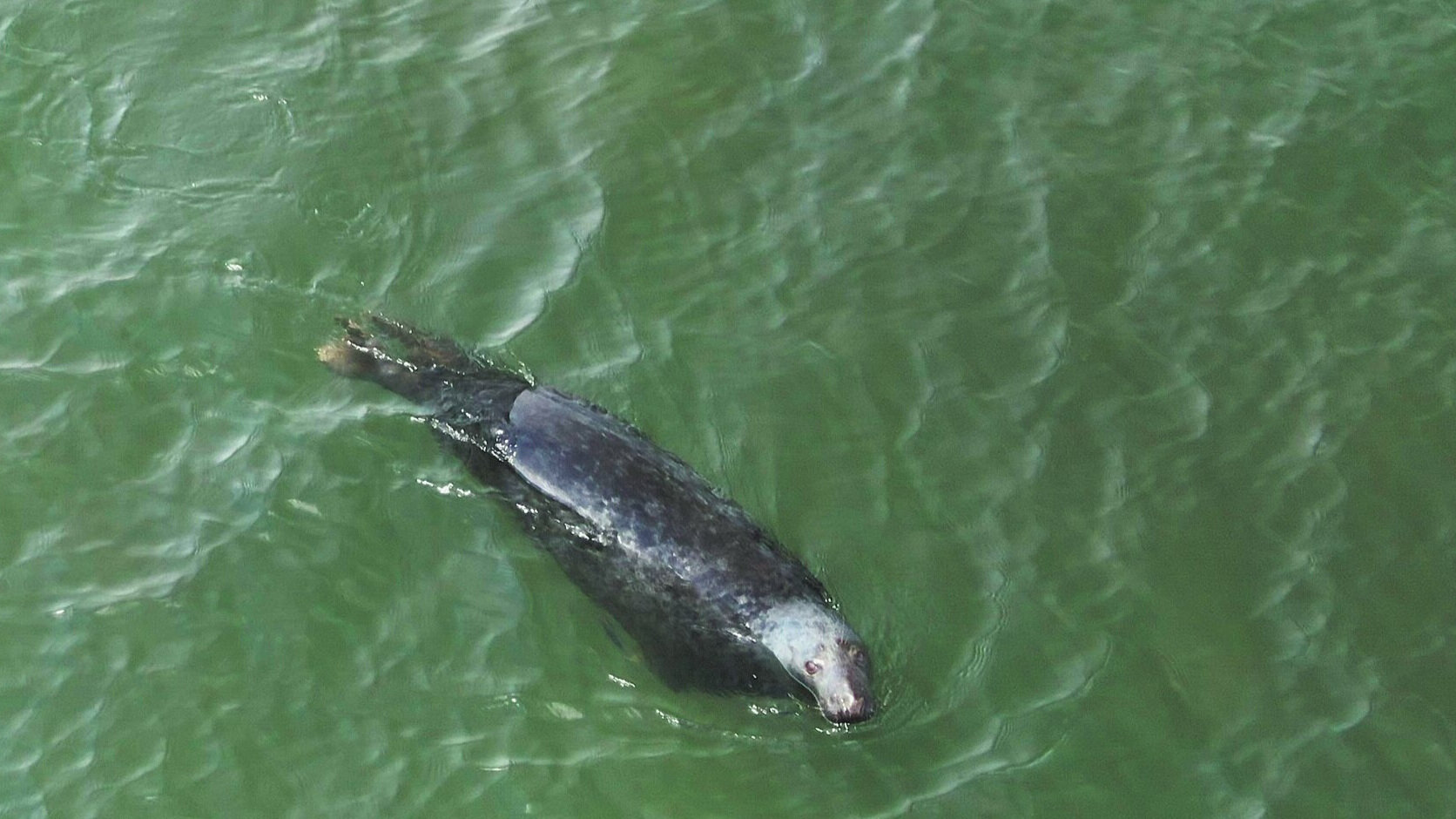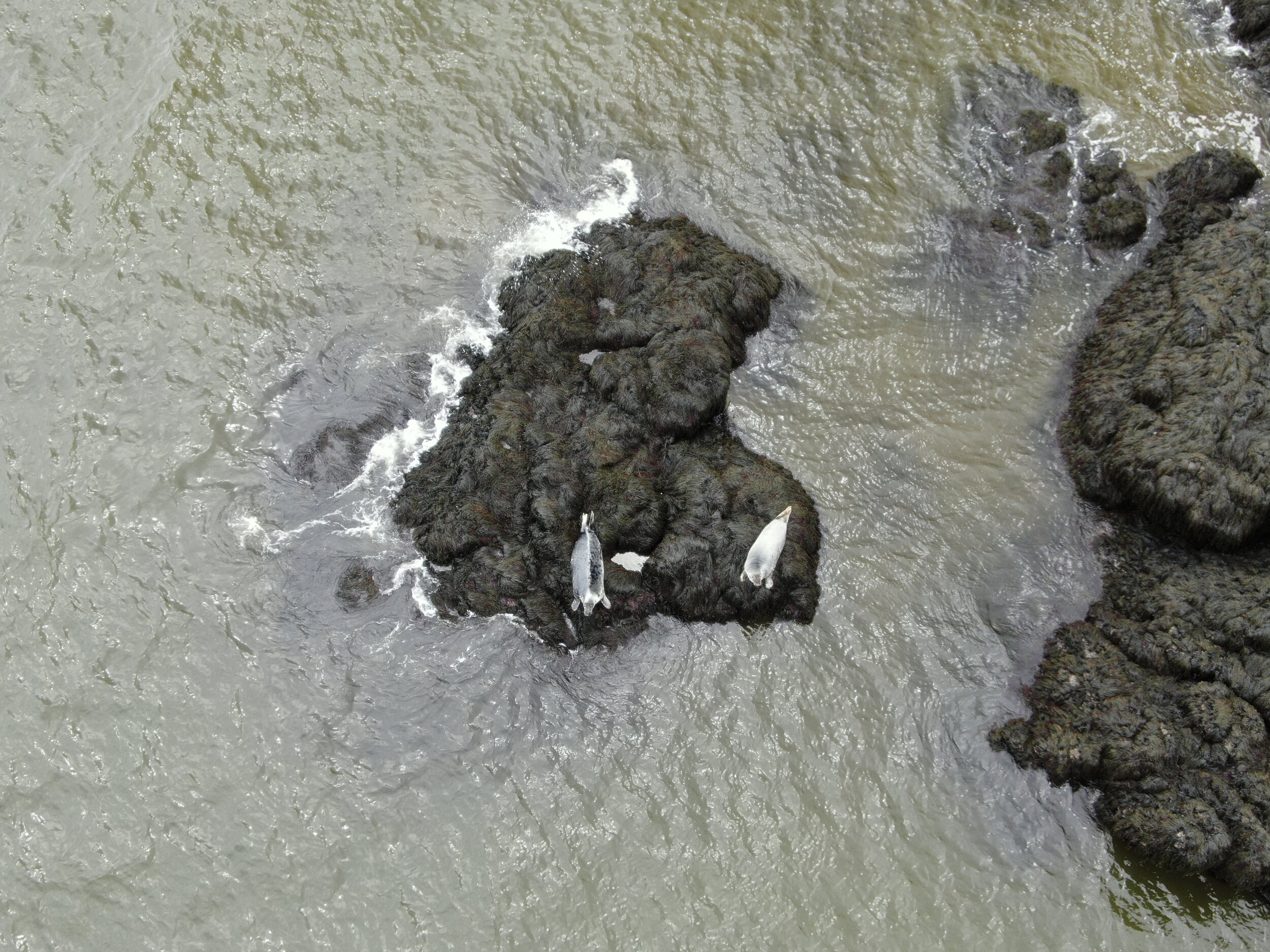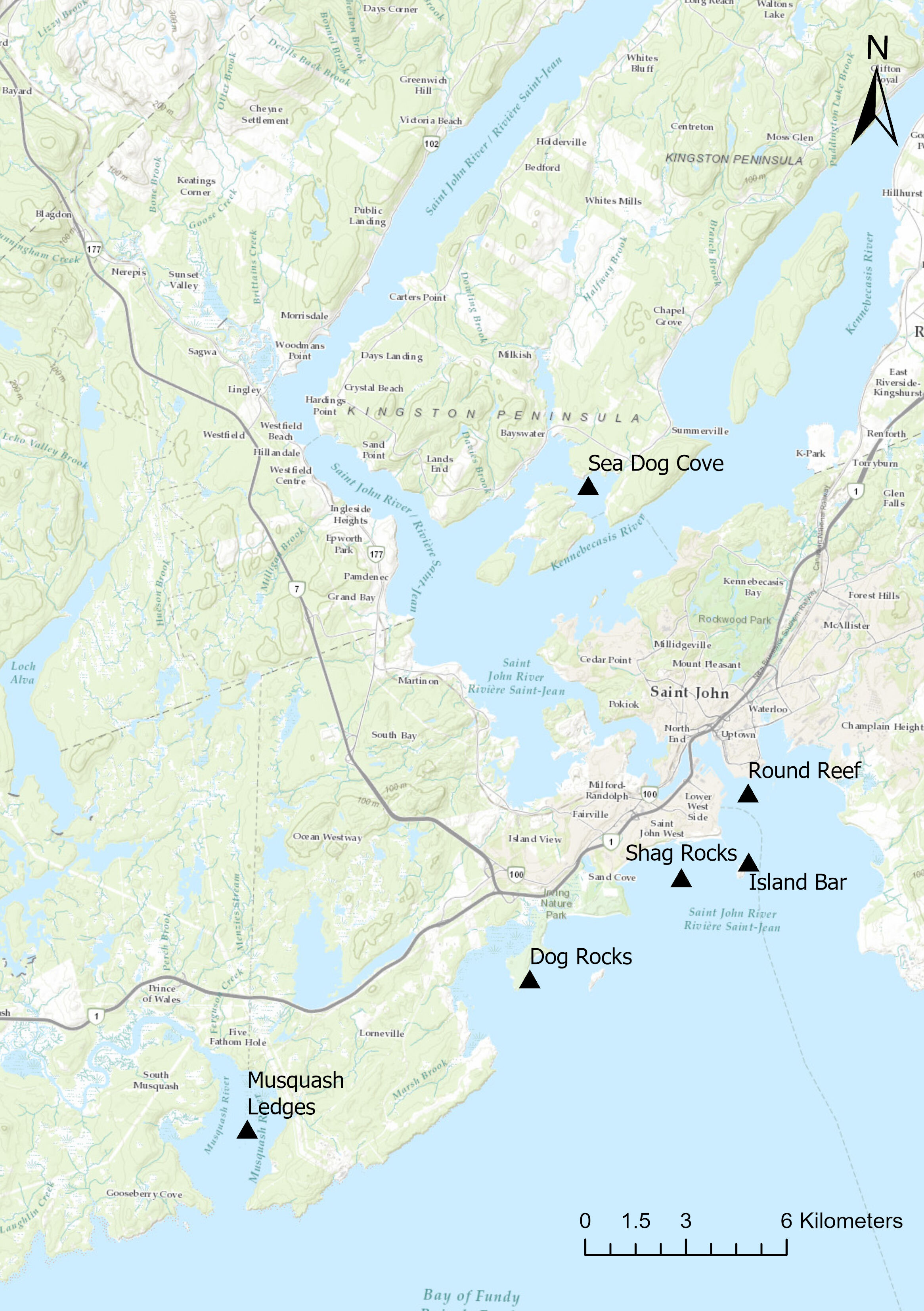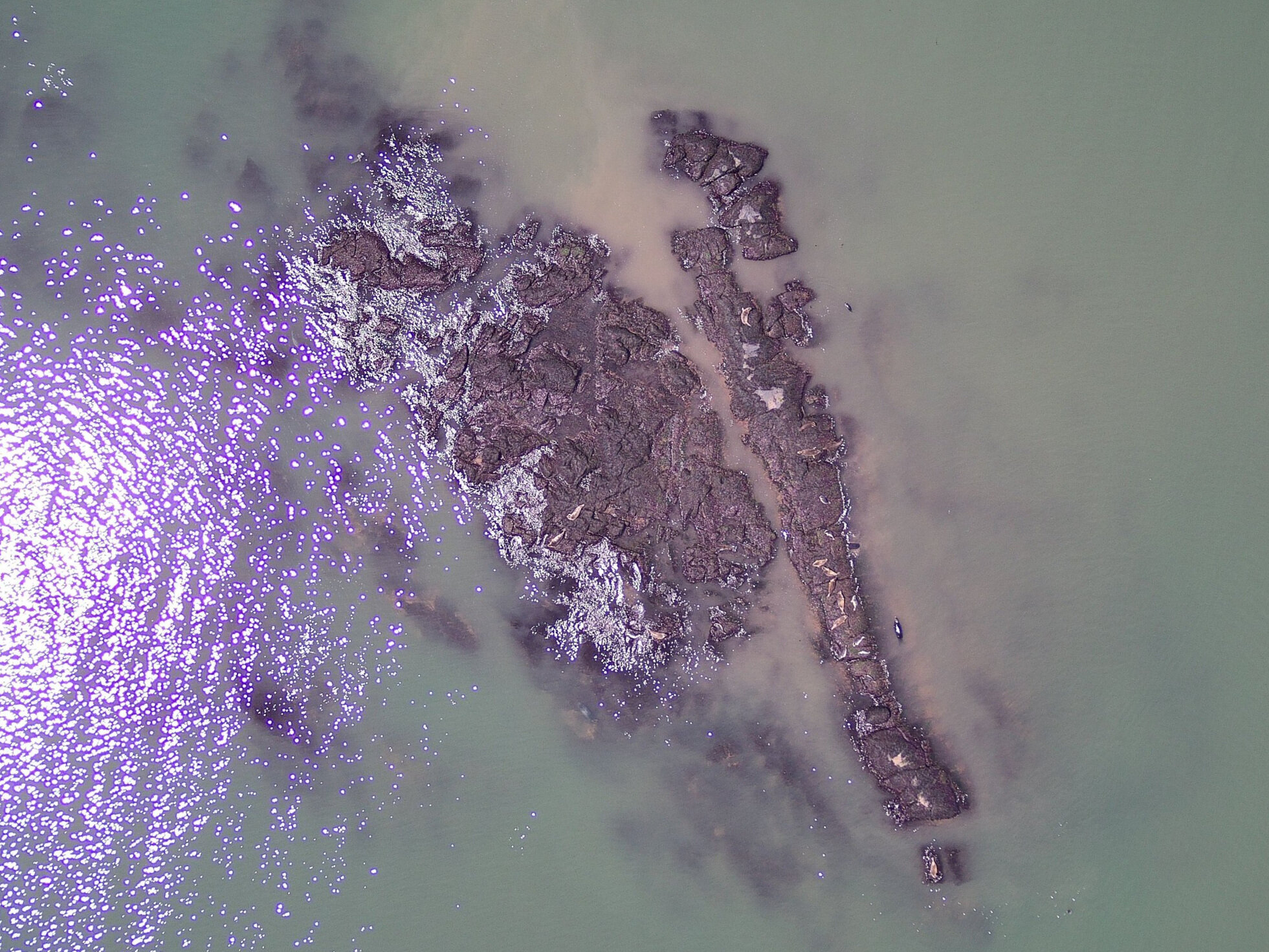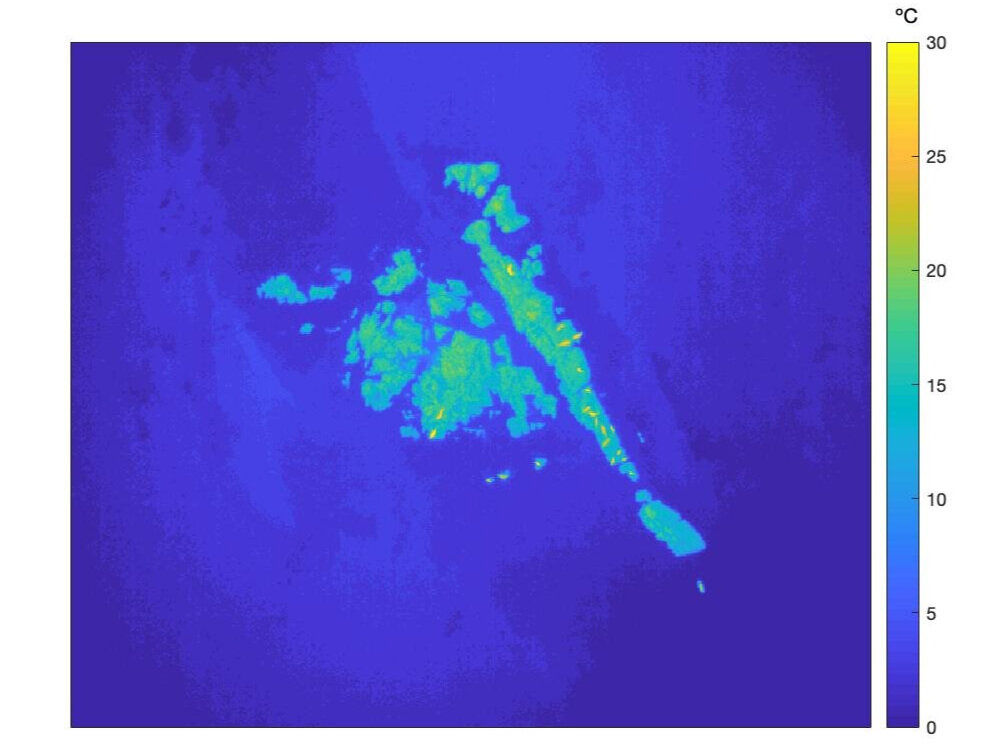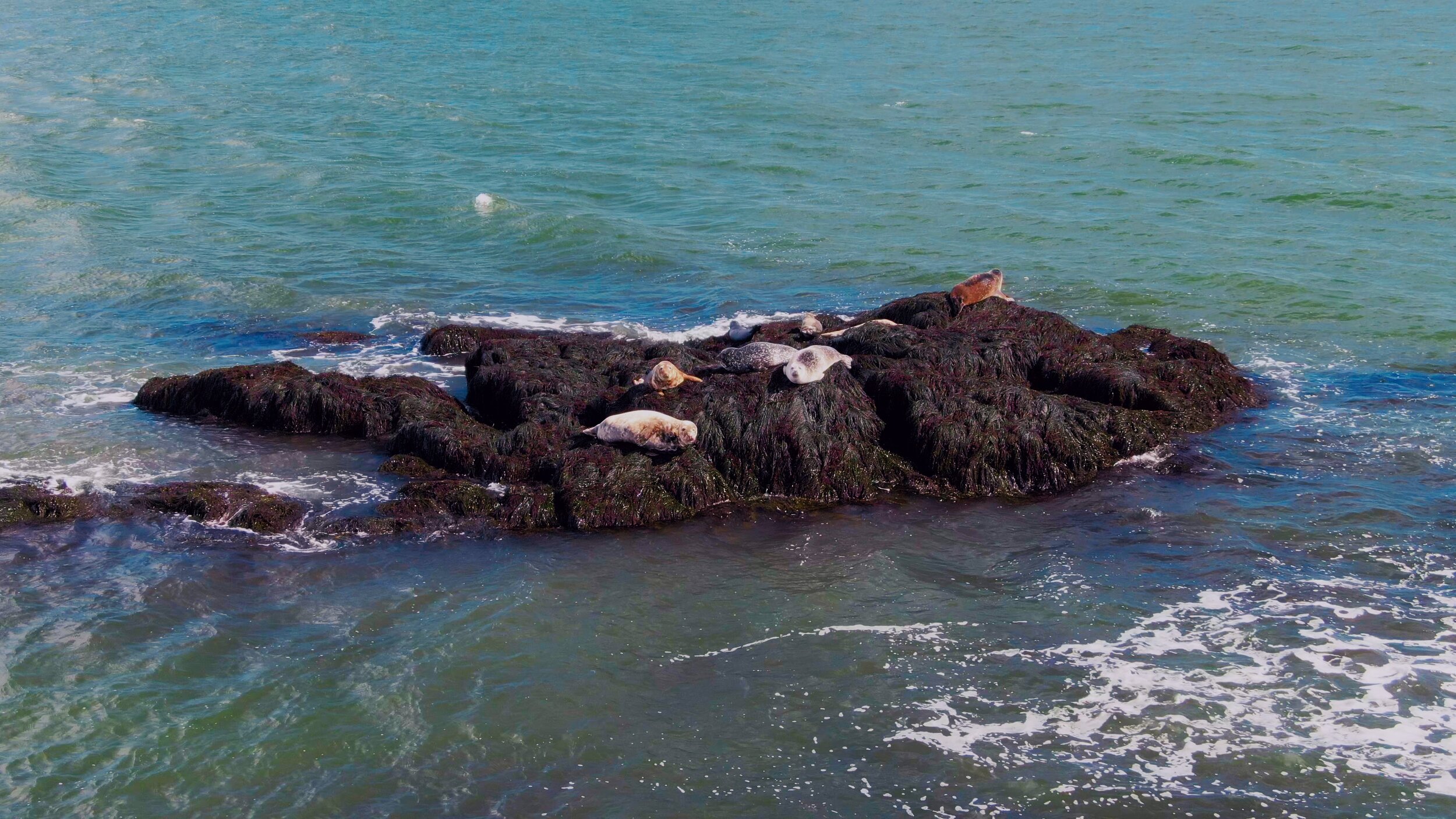Saint John Sea(l) Dogs
Did You Know?
Did you know that ACAP Saint John has been working on a project observing Harbour seal populations in the Saint John Harbour? This 3-year project (funded by DFO’s Coastal Environmental Baseline Program) involves counting seals as they haul out on rocks at low tide on a biweekly basis. Over time, we are hoping to collect enough data to determine the population numbers of seals in our region and compare it to similar studies that were conducted in the 1990s.
We have six sites that we visit: five sites that are located in the Saint John Harbour and one site located along the Wolastoq [St. John River] (Sea Dog Cove, Summerville). Our observations are conducted every two weeks when the low tide is in the afternoon. Using spotting scopes, binoculars, and (occasionally) drones, we count and record the number of seals that are seen hauled out on the rocks and swimming nearby. Since seals do not migrate south for the winter, we are able to continue with observations throughout the winter (with the exception of the river site since it does freeze).
Map of harbour seal haul out site locations throughout the Saint John Harbour.
Results (so far)
Overall, we’ve been very successful with our sightings. As expected, most sites have more seals in the spring compared to other seasons, likely due to April-June being their mating/pupping season. It was also observed that during the winter months there is a number of seals that haul out at Dog Rocks (along the Irving Nature Park). Since seals don’t necessarily long-distance migrate during the winter, perhaps they move between the different haul out sites throughout the seasons.
Number of seals observed at all haul out sites (excluding Round Reef) from Dec ‘18 - Nov ‘20.
We are very fortunate to have a landowner near the Sea Dog Cove site that completes our freshwater observations for us. She noticed that the seals don’t haul out during the day based on the tides, but based on the time of day. She is more likely to see seals during sunrise and sunset.
Historically there have been sightings of seals on Round Reef (just off Tin Can Beach) and that’s why it was added as an observation site. However, no seals have been observed at this site as of yet! Perhaps they’ve found a better place to sunbathe.
What’s New?
This past summer we teamed up with Gina Lonati, a PhD student from UNBSJ, who is currently studying the health of North Atlantic Right Whale using drones. Gina is helping us by flying her drone over the haul out sites to achieve a more accurate count of the seals. Her fancy drone can also take thermal images of the seals - check it out!
(left): image of seals hauled out at low tide; (right): thermal image of seals hauled out oat low tide. Yellow = hot, blue = cold
What’s Next?
ACAP will continue to collect data for another year. Although it is still too early to make any conclusive results, collecting this data will contribute to filling up data gaps in our region.
CITIZEN SCIENCE
Have you seen any harbour seals lately? We’re interested in hearing from you! If you see any seals at all during your travels, whether they are swimming along the river or hauled out on some rocks, let us know! You can fill out a Seal Sighting Submission Form and let us know how many seals you saw and roughly where you spotted them. This data collected will help us determine the population of seals here in the Saint John Harbour.

